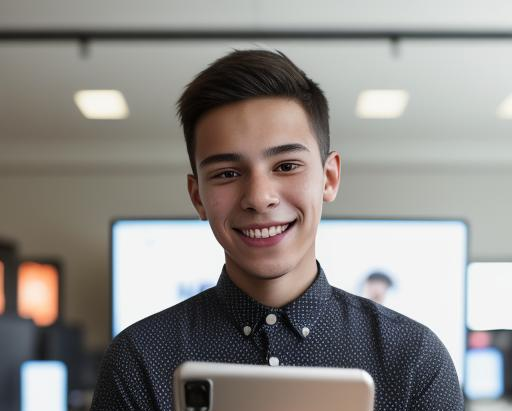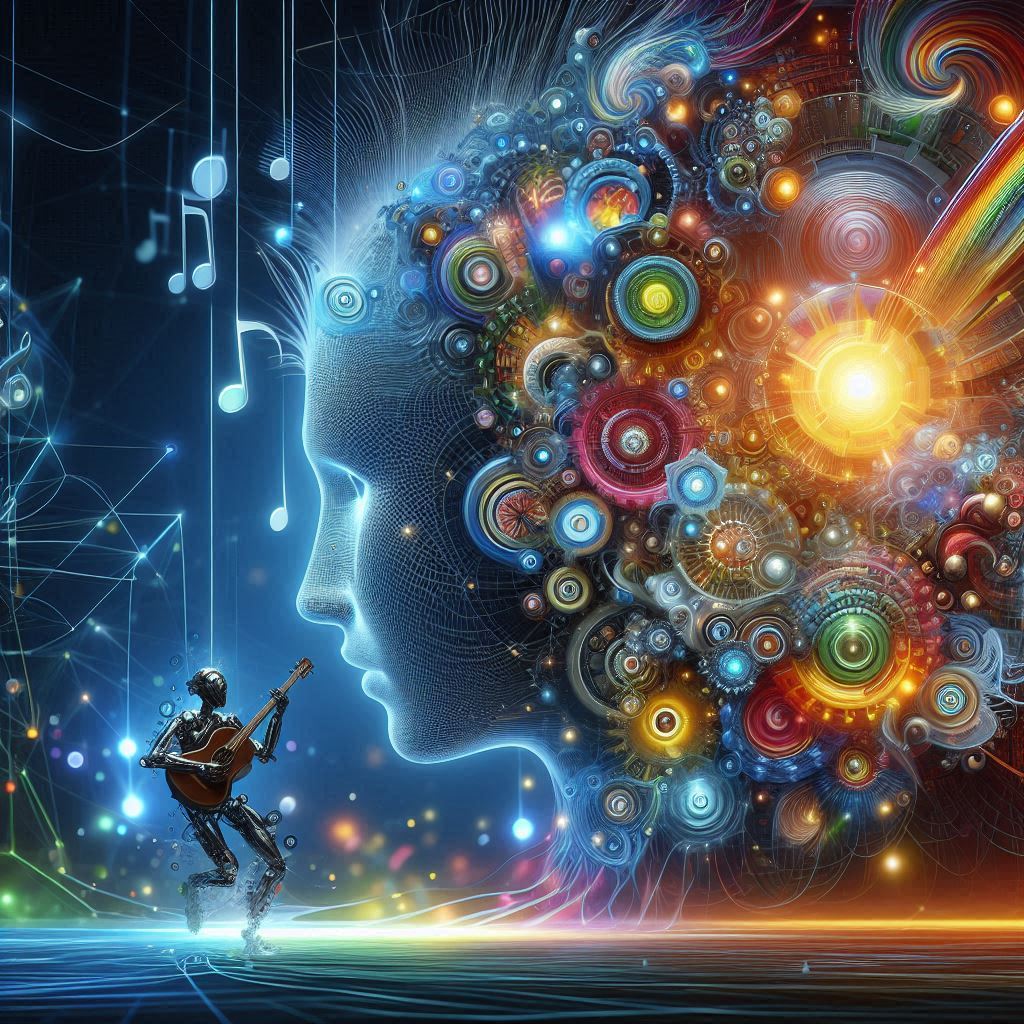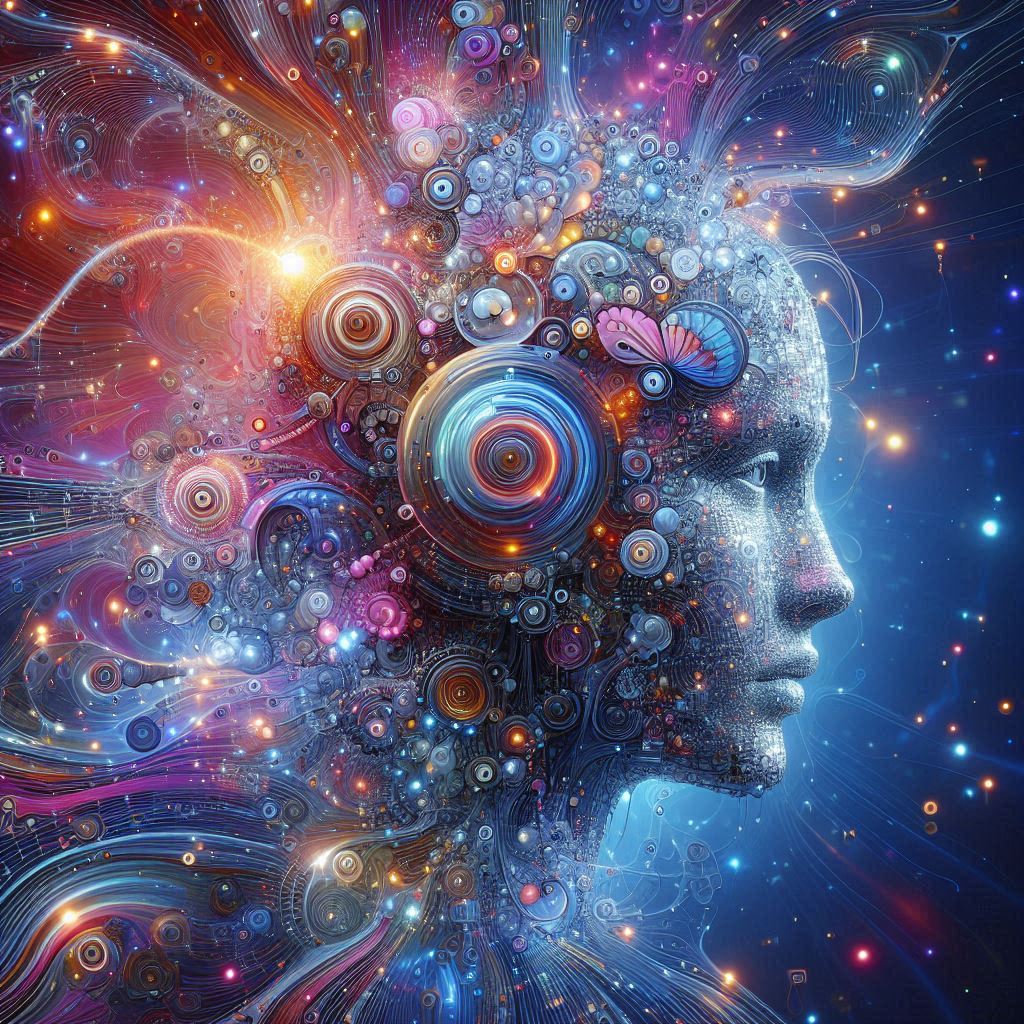Generative AI in Creative Industries: Transforming Art, Music, and Media Production
 Christopher Wilson
Christopher Wilson
The advent of generative artificial intelligence (AI) has ushered in a new era of creativity and innovation across various industries. As AI technologies continue to evolve, their impact on the creative sectors, such as art, music, and media production, has become increasingly significant. This article explores the transformative potential of generative AI in reshaping the creative landscape and the challenges and opportunities that come with it.
The Rise of AI-Generated Art
In recent years, the art world has witnessed a surge in the use of generative AI to create stunning visual works. From deep learning algorithms that can generate photorealistic images to neural networks that can mimic the styles of famous artists, AI has opened up new avenues for artistic expression.

One notable example is the rise of GANs (Generative Adversarial Networks), which have been used to create everything from abstract art to realistic portraits. These networks consist of two competing neural networks – a generator that creates new images and a discriminator that evaluates their authenticity. Through this adversarial process, GANs can learn to generate increasingly realistic and diverse images.
The use of AI in art has not been without controversy, however. Some artists and critics have raised concerns about the potential for AI to replace human creativity and the ethical implications of using algorithms to create art. Others have embraced AI as a tool to augment and inspire their own creative processes, leading to new forms of collaboration between humans and machines.
AI-Powered Music Creation
The music industry has also been quick to adopt generative AI technologies, with a growing number of artists and producers using AI to create and manipulate sound. From AI-generated music compositions to intelligent audio processing tools, the possibilities for AI in music are vast.
One area where AI has shown particular promise is in the creation of personalized music experiences. By analyzing a listener's preferences and listening history, AI algorithms can generate custom playlists, recommend new artists, and even create original compositions tailored to individual tastes.
AI is also being used to streamline the music production process, with tools that can automatically mix and master tracks, generate realistic instrument sounds, and even assist with songwriting. While some musicians have expressed concerns about the potential for AI to replace human creativity, others see it as a powerful tool to enhance their own artistic vision and push the boundaries of what is possible in music.
Transforming Media Production
The media industry, encompassing film, television, and digital content, is another area where generative AI is making significant inroads. From script generation to video editing, AI is being used to automate and optimize various aspects of the production process.
One example is the use of AI-powered video synthesis, which can generate realistic video footage from scratch or manipulate existing footage in real-time. This technology has applications in everything from special effects to virtual reality, allowing creators to bring their visions to life in ways that were previously impossible.
AI is also being used to personalize and optimize content delivery, with algorithms that can analyze viewer preferences and engagement to recommend tailored content and ad placements. This has the potential to revolutionize the way media is consumed and monetized, creating new opportunities for content creators and advertisers alike.
Challenges and Opportunities
While the potential for generative AI in the creative industries is immense, it also presents a number of challenges and ethical considerations. One major concern is the potential for AI to perpetuate biases and reinforce existing inequalities, particularly if the algorithms are trained on datasets that lack diversity and representation.
There are also questions around intellectual property and attribution when it comes to AI-generated content. As AI becomes more advanced and autonomous, it may become increasingly difficult to determine who owns the rights to the content it creates and how credit should be allocated.
Despite these challenges, the opportunities for generative AI in the creative industries are too significant to ignore. By embracing AI as a tool for augmenting and enhancing human creativity, artists, musicians, and media producers can push the boundaries of what is possible and create new forms of expression that were previously unimaginable.
Moreover, the use of AI in the creative industries has the potential to democratize access to creative tools and resources, allowing a wider range of voices and perspectives to be heard. As the technology becomes more accessible and user-friendly, it may open up new opportunities for emerging artists and creators who may have previously faced barriers to entry.
The Future of Creative AI
As generative AI continues to evolve and mature, its impact on the creative industries is likely to become even more profound. From the creation of entirely new forms of art and music to the personalization and optimization of media experiences, the possibilities are endless.
However, it is important to approach the integration of AI into the creative process with a critical eye, being mindful of the potential risks and unintended consequences. As with any powerful technology, the development and deployment of generative AI in the creative industries must be guided by ethical principles and a commitment to using it in ways that benefit society as a whole.
This will require ongoing collaboration and dialogue between AI researchers, creative professionals, policymakers, and the public to ensure that the technology is developed and used in a responsible and equitable manner. It will also require a willingness to adapt and evolve as the technology advances and new challenges and opportunities arise.
Ultimately, the success of generative AI in the creative industries will depend on our ability to strike a balance between the transformative potential of the technology and the enduring value of human creativity and imagination. By working together to harness the power of AI in service of our creative aspirations, we can unlock new frontiers of artistic expression and cultural innovation.
Empowering Creatives in the AI Era
As generative AI becomes more integrated into the creative process, it is important to ensure that it is used in ways that empower and support human creatives, rather than replacing or diminishing their role. This will require a shift in mindset from seeing AI as a threat to creative jobs to seeing it as a tool that can augment and enhance human creativity.
One way to achieve this is through education and training programs that help creatives understand and leverage the capabilities of AI in their work. This could include workshops, online courses, and mentorship programs that provide hands-on experience with AI tools and techniques, as well as guidance on how to integrate them into existing creative workflows.
Another important aspect of empowering creatives in the AI era is ensuring that they have access to the resources and support they need to experiment with and adopt new technologies. This could include funding and grants for AI-related creative projects, as well as partnerships between creative industries and technology companies to develop and deploy AI tools that are tailored to the needs of specific creative disciplines.
Ultimately, the goal should be to create a collaborative and inclusive ecosystem where human creatives and AI can work together in harmony, each bringing their unique strengths and perspectives to the table. By doing so, we can unlock new forms of creativity and innovation that were previously unimaginable, while also ensuring that the benefits of AI are distributed in a fair and equitable manner.
Conclusion
The rise of generative AI in the creative industries represents a watershed moment in the history of human creativity. As the technology continues to evolve and mature, it has the potential to transform the way we create and experience art, music, and media in profound and far-reaching ways.
However, realizing this potential will require a concerted effort from all stakeholders – researchers, creatives, policymakers, and the public – to ensure that the technology is developed and used in a responsible, ethical, and equitable manner. This will require ongoing dialogue, collaboration, and a willingness to adapt and evolve as new challenges and opportunities arise.
Ultimately, the success of generative AI in the creative industries will depend on our ability to strike a balance between the transformative potential of the technology and the enduring value of human creativity and imagination. By working together to harness the power of AI in service of our creative aspirations, we can create a future where technology and creativity are not in opposition, but in harmony – a future where the boundaries of what is possible are limited only by the scope of our imagination.
https://fileenergy.com/pokupki-v-kitae/silikonovyj-termostojkij-kovrik-dlya-pajki
https://fileenergy.com/pokupki-v-kitae/portativnaya-ratsiya-quansheng-uv-k5-8
Subscribe to my newsletter
Read articles from Christopher Wilson directly inside your inbox. Subscribe to the newsletter, and don't miss out.
Written by
